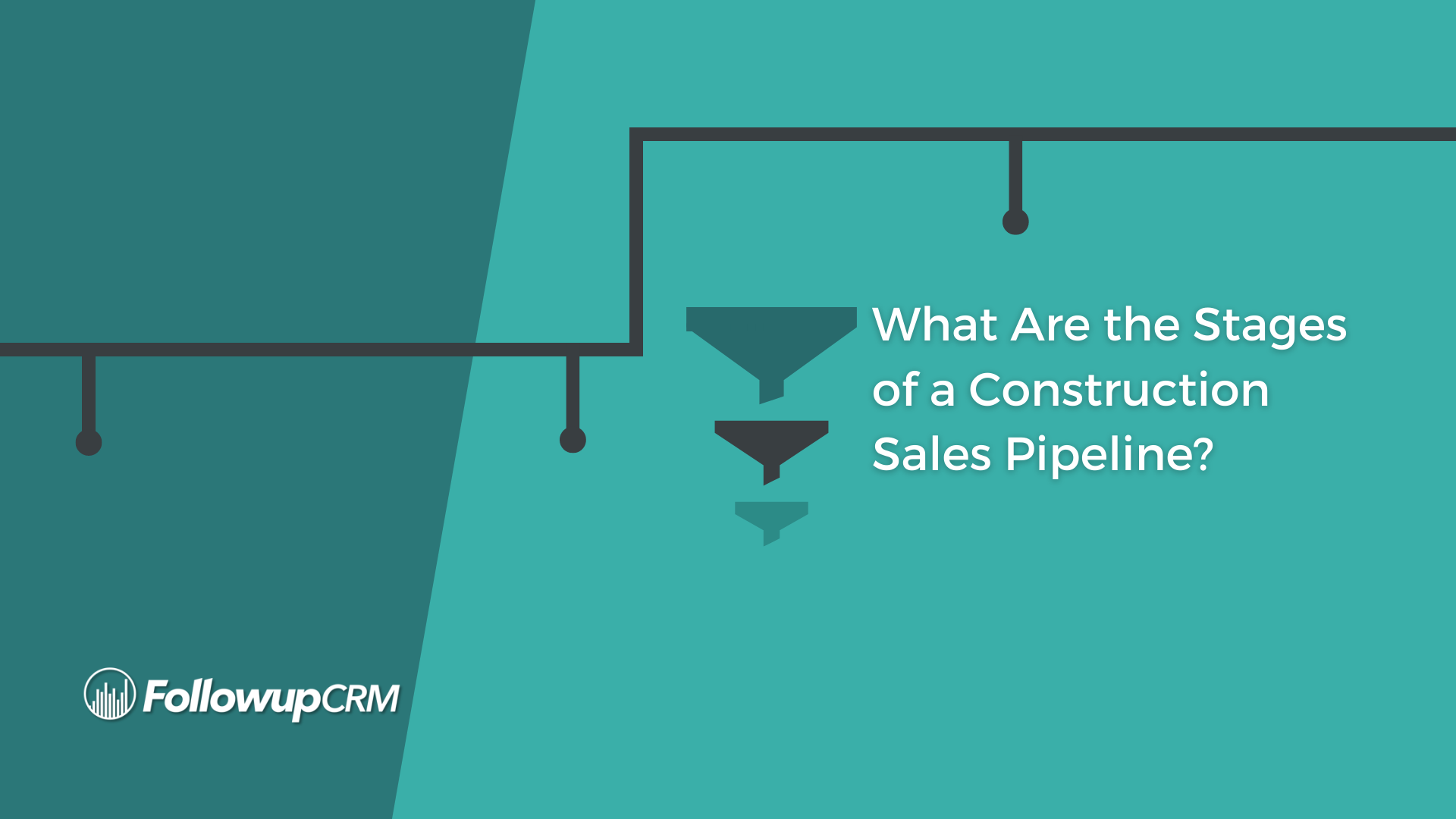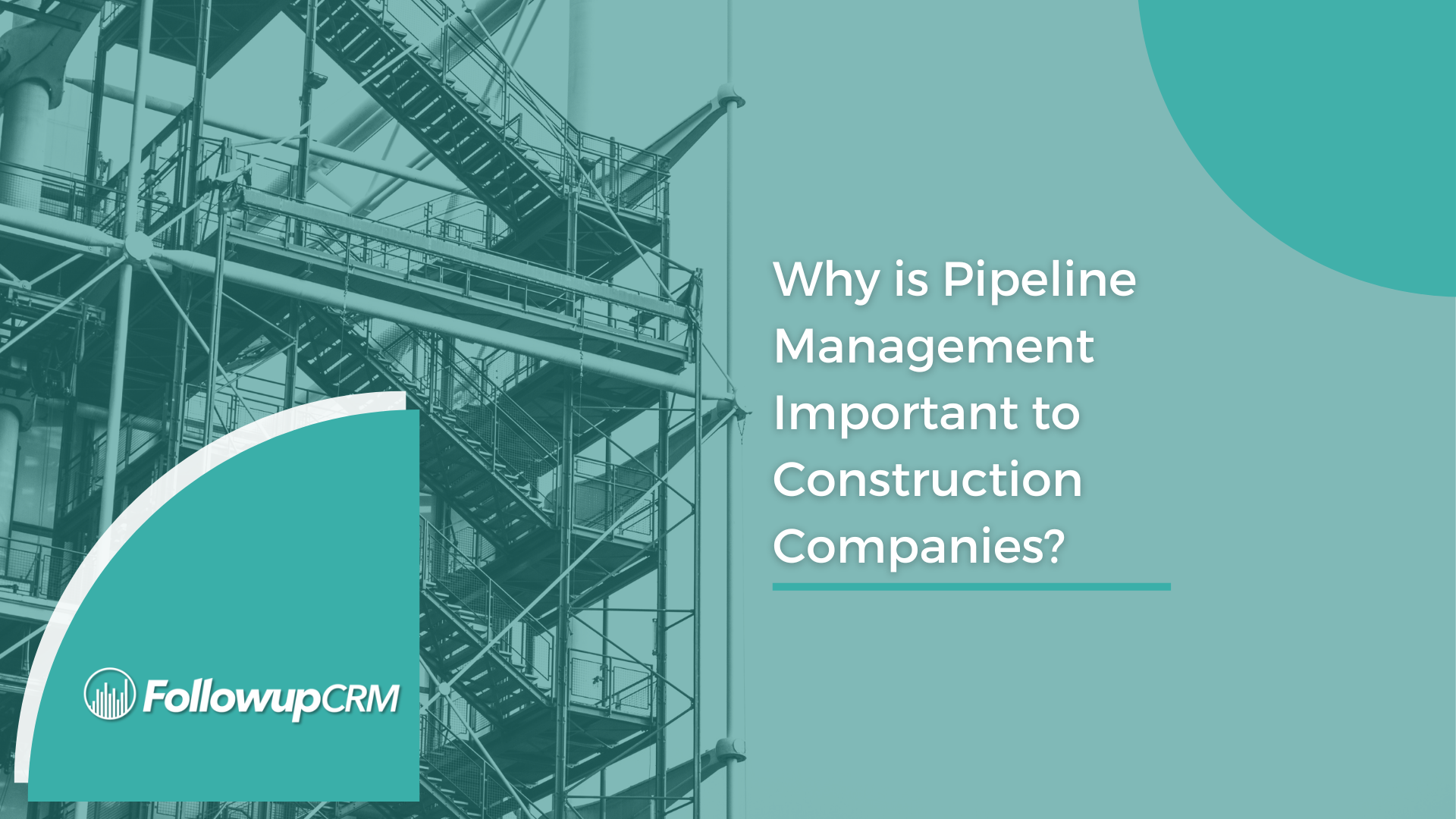A well-managed sales pipeline allows a construction company to make smart decisions that produce sales, increasing growth and profits. It can show you who your best leads are, how to identify a dead lead, where you or your sales team encounter problems moving a lead through the pipeline, where your salespeople excel or need assistance, and how to predict company revenue.
It Helps You See the Big Picture
A sales pipeline gives you a glimpse of what stage each lead is currently at in the sales process. It helps you decide what the next step is in order to move the lead toward conversion.
Your pipeline can also tell you if your construction company is on track to reach your sales goals for the week, or month, or quarter. Your pipeline can also help you understand the performance of your sales reps based on their conversion rates.
.png)
The Sales Pipeline Helps Define the Sales Stages
Some companies use a five-stage pipeline, others use up to eight stages. For instance, with a plumbing or HVAC company, four to five stages may be typical, but for a general contractor working with commercial properties, eight stages may be necessary.
Start with basic stages as you begin sales pipeline management, and after a while, you will see what is typical for your company and the stages can be refined to meet your needs.
Typical Sales Pipeline Stages
Lead qualification
Meeting – set or completed
Proposal or bid delivered
Negotiation
Finalizing the proposal
Sale Closed
Post-Purchase follow up and ongoing relationship cultivation for repeat sales and referrals
The Pipeline Makes Sales Goals Easier to Achieve
Once a construction company has defined the stages each lead goes through on their way to a sale, your sales team will always know what the next step or goal is. Understanding what the next step is and breaking the process into smaller goals will make the journey easier for the sales team.
Improve Sales
Sales pipeline management allows the sales team to organize and monitor prospects, easily see how many prospects they are actively working, the size of the projects under consideration, what stage each prospect is in, and what the next step is.
By reviewing the pipeline, you can identify the stages where leads stagnate or are lost. Once you can identify the issues, you can work on resolving them.
By reviewing your sales pipeline, you can begin to identify best-fit prospects and then you can direct your sales and marketing efforts toward those prospects.
Allows Review and Improvement of Your Pipeline Progress
You’ll be able to discover at what stage along the pipeline movement is delayed and find a solution. Perhaps it’s taking longer than it should to get proposals finished, you can then find out why and how it can be corrected.
.png)
Provides Data
Once you’ve managed your sales pipeline for a few months, you can begin to identify the typical sales stages your prospects go through, how long each stage takes, and your conversion rates.
Following is the type of information a well-managed sales pipeline can provide:
Number of qualified leads currently in the pipeline
Average sale of each potential contract
Win rate – the percentage of leads that become customers
Sales pipeline value – the total value of every lead in your pipeline
Sales speed – the average time it takes a lead to move to a sale
Close rates– the percent of leads your company typically converts to sales
You can also assign probable close rates to each stage of the sales pipeline. The rule is that the further along the pipeline the prospect is, the greater the probability the job will close.
Lead response time – average time it takes a sales agent to contact a new lead.
Helps Manage Your Sales Team
Pipeline visibility will allow you and your sales team to track their performance and compare current performance to previous months, quarter or years. Performance based on type of lead can also be reviewed.
You’ll be able to see strengths and weaknesses of each salesperson and find better ways to utilize them. For instance, one salesperson might have an impressive ability to gain meetings but a low close rate. With this information you can decide which salesperson should handle which project based on their experience and skill set or which will need coaching or further training and in what areas.
Your pipeline can show you not only if you’ve missed an opportunity, but help you understand where the problem occurred, or the lead was lost, and improve your sales strategies in the future.
Allows You to Calculate Revenue
Analyzing your sales pipeline will help you understand the financial health of you company by using the size of the projects, the speed which prospects typically move through your sales pipeline, and your average conversion rates to predict future revenue. This data is essential to maximizing sales, profits and growth.
A well-designed pipeline manage tool such as customer relationship management software, does the analytics for you. It allows you to quickly identify ways to improve the process, stop leaks in the pipeline, convert more leads to sales and maximize profit on each job.







